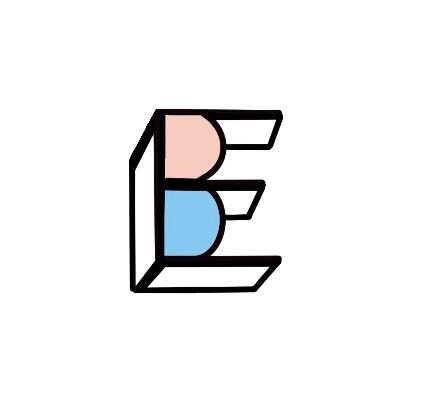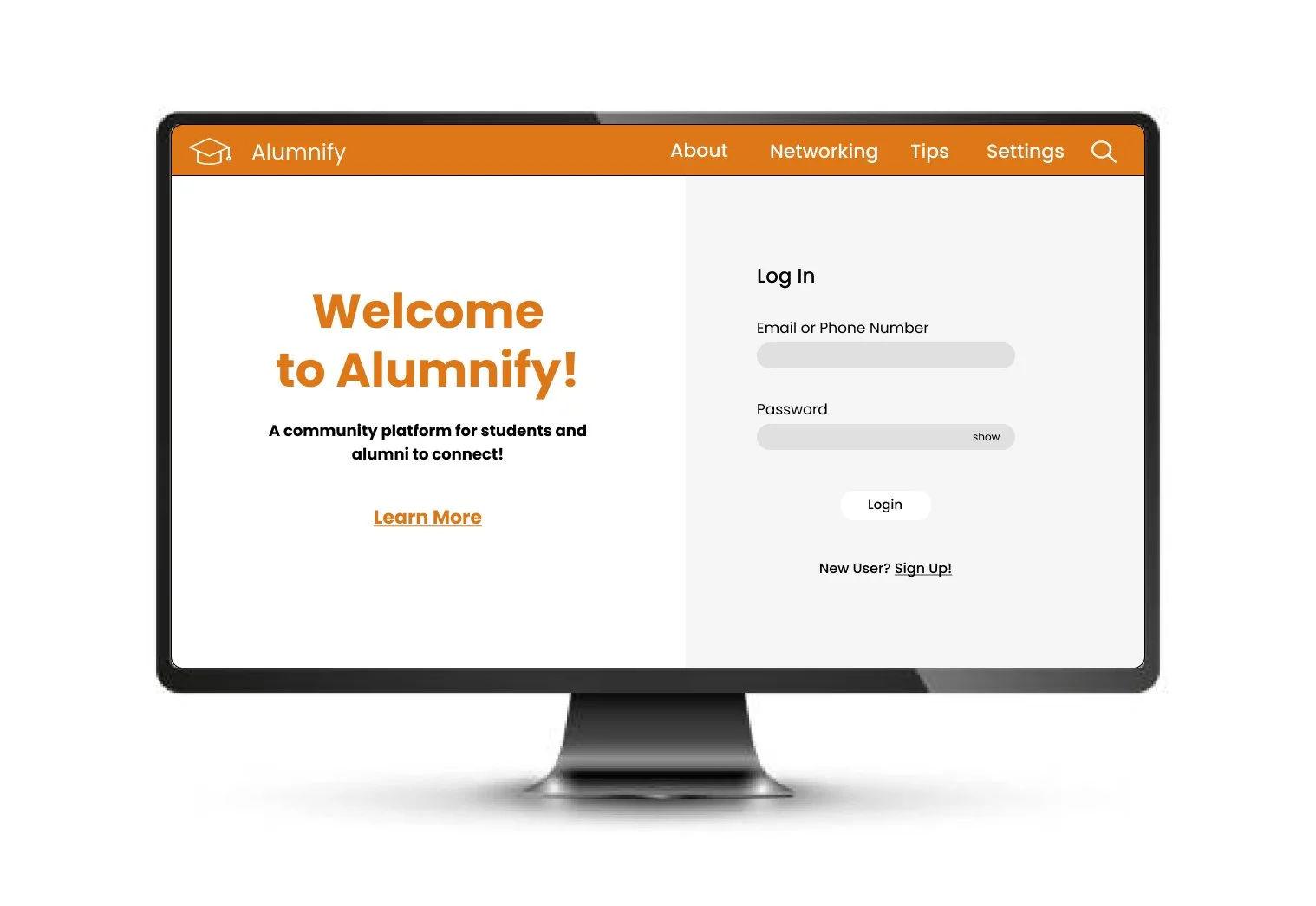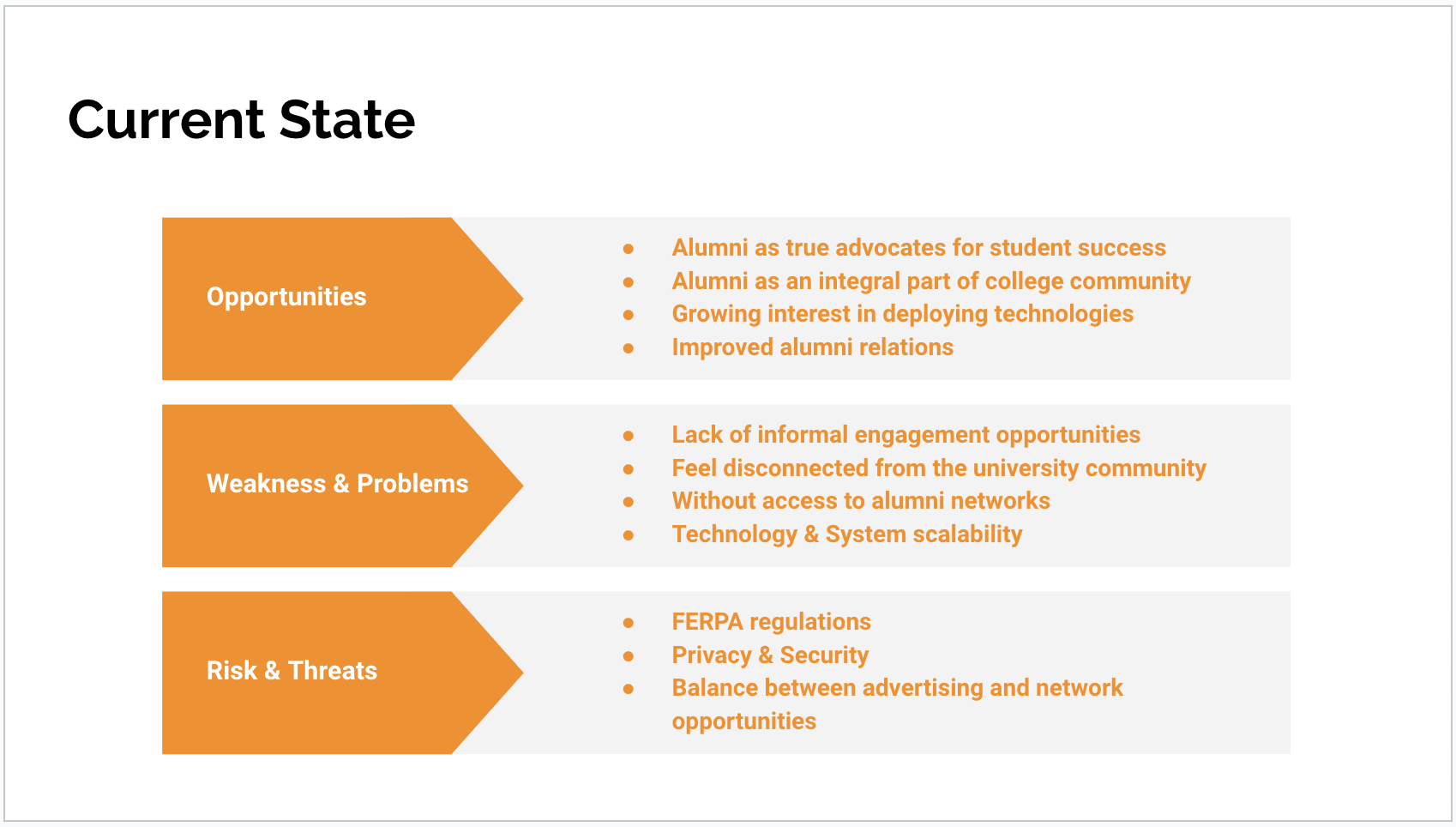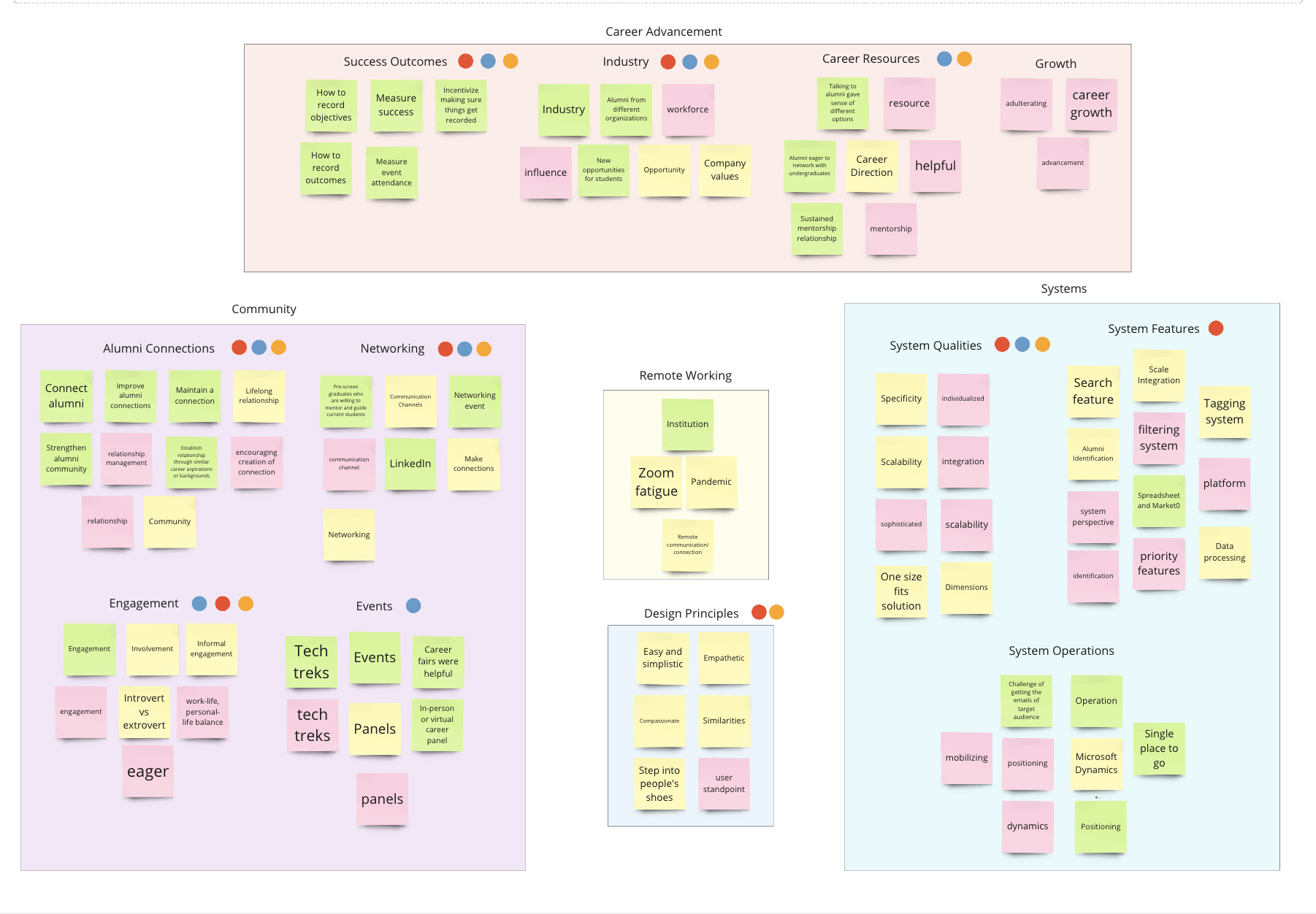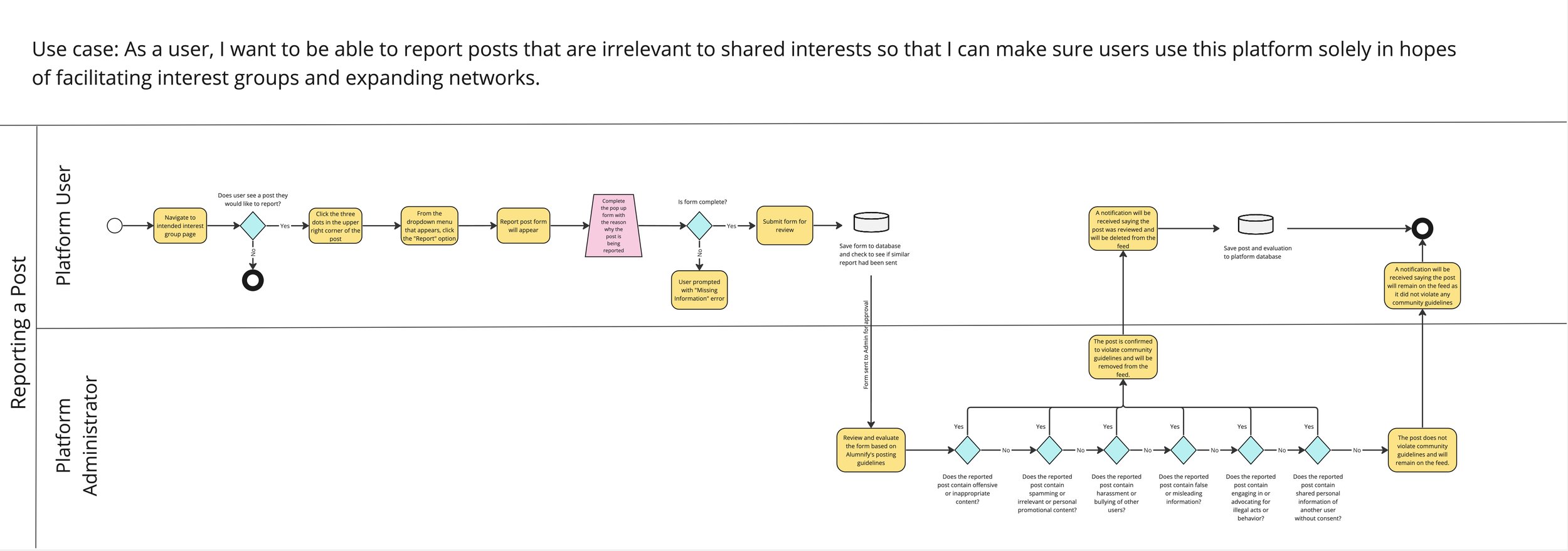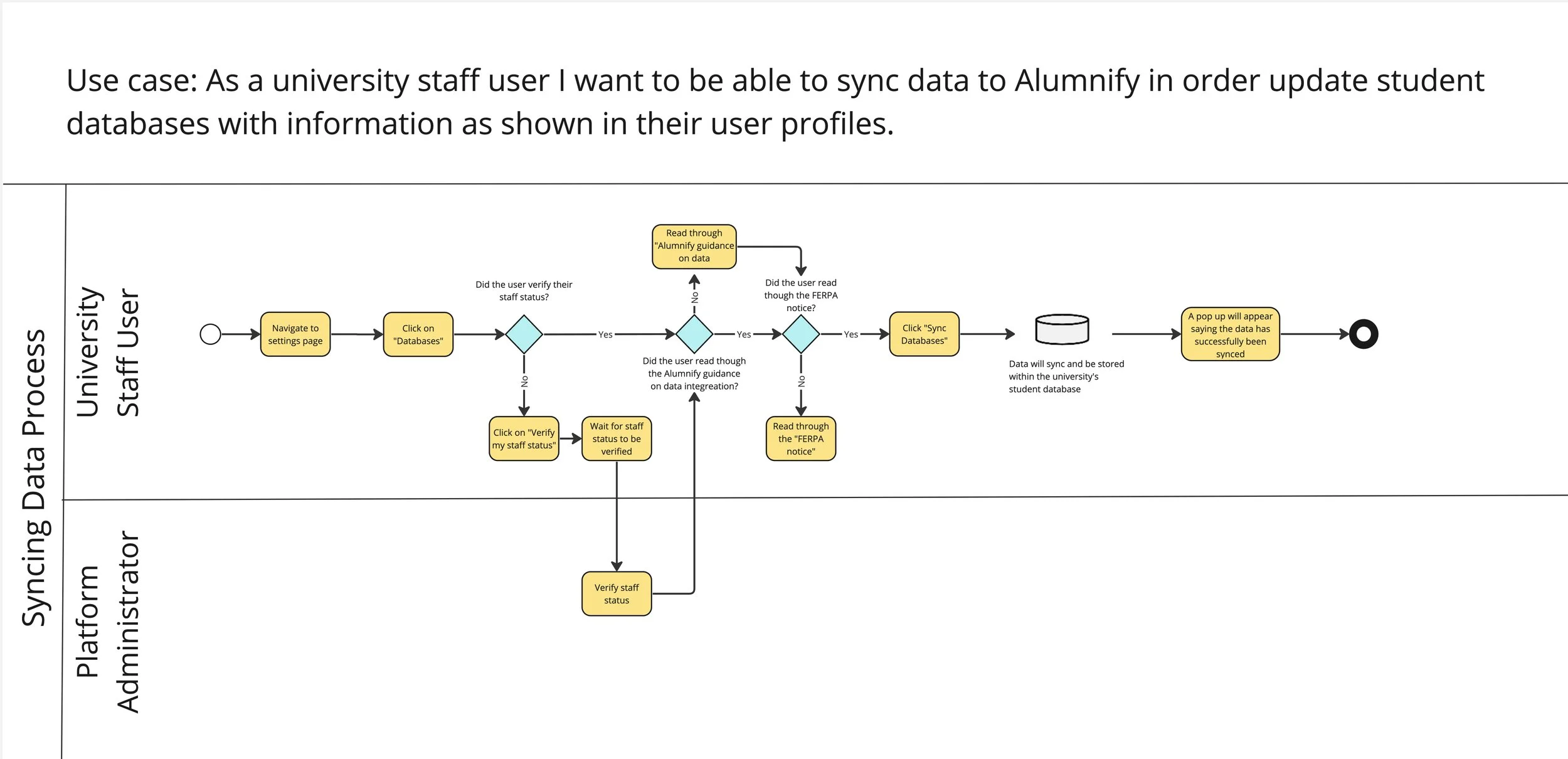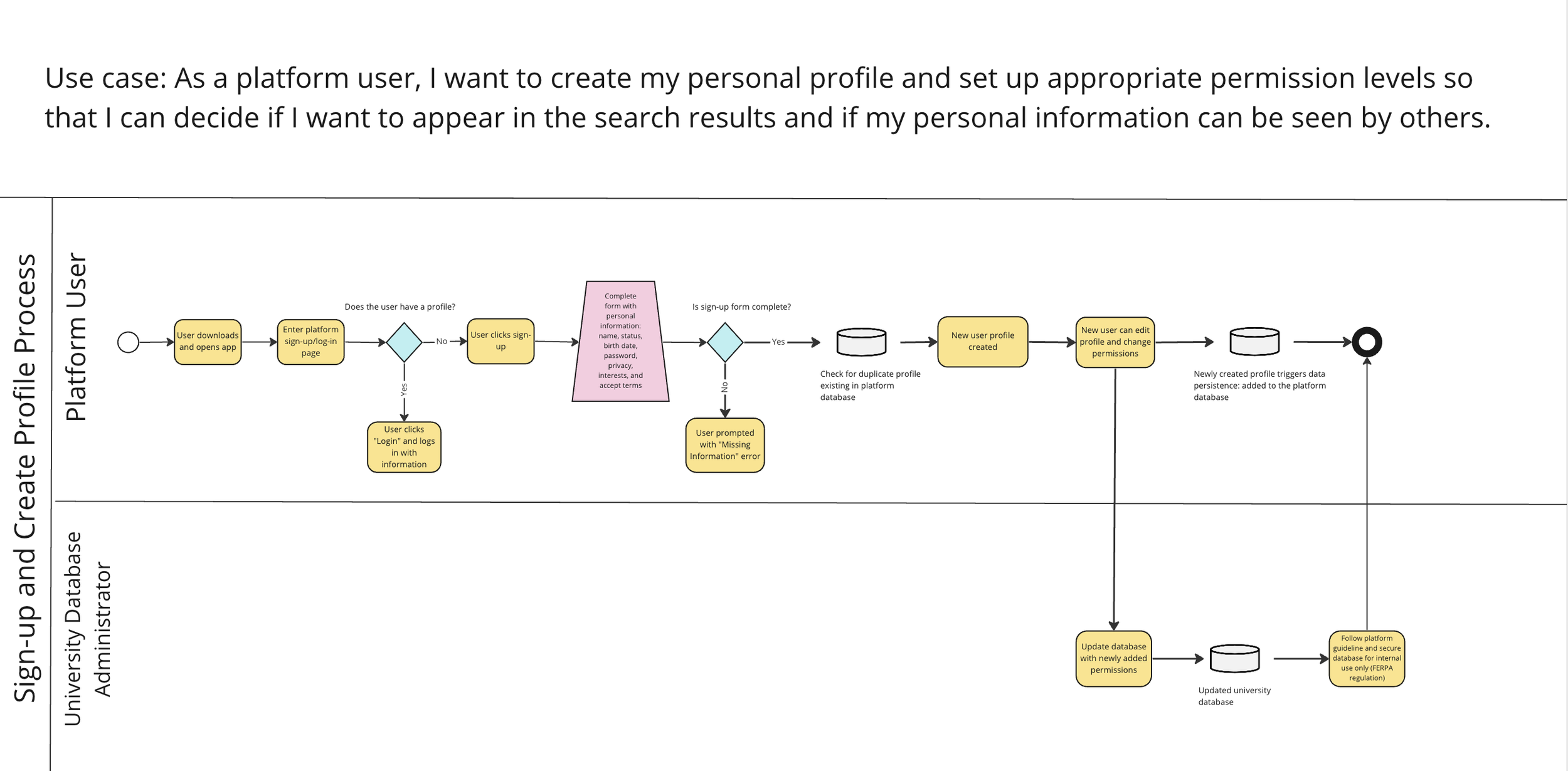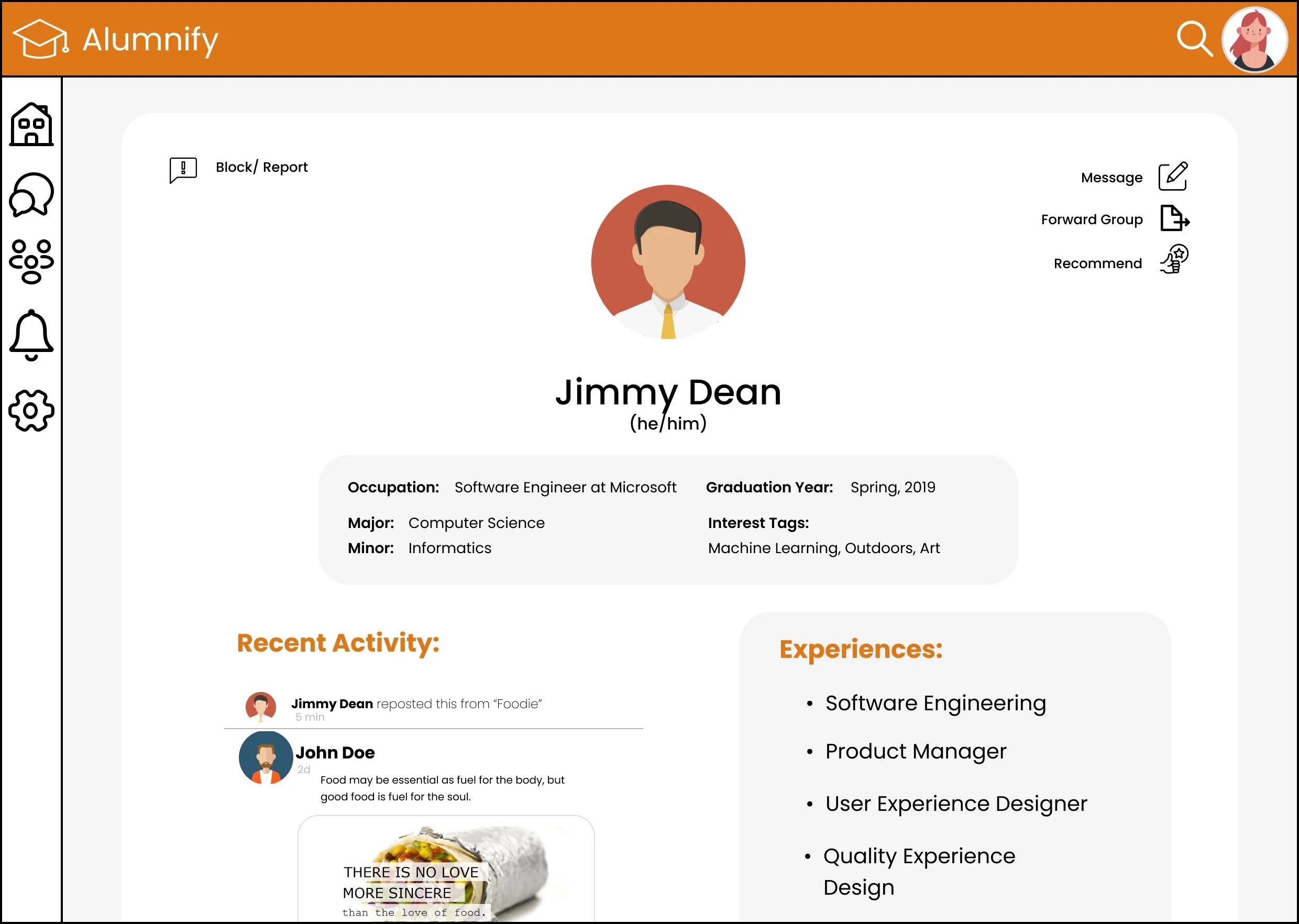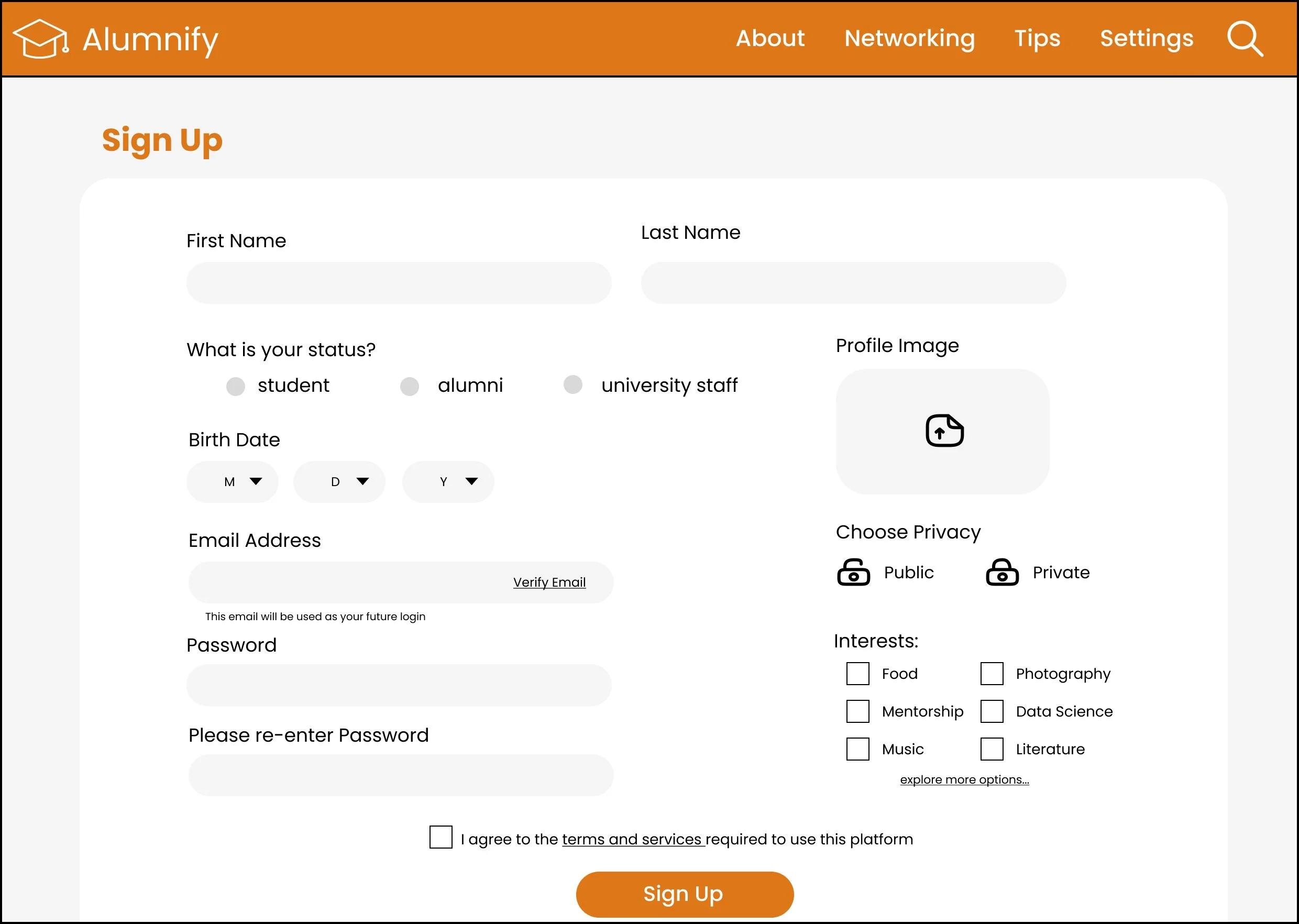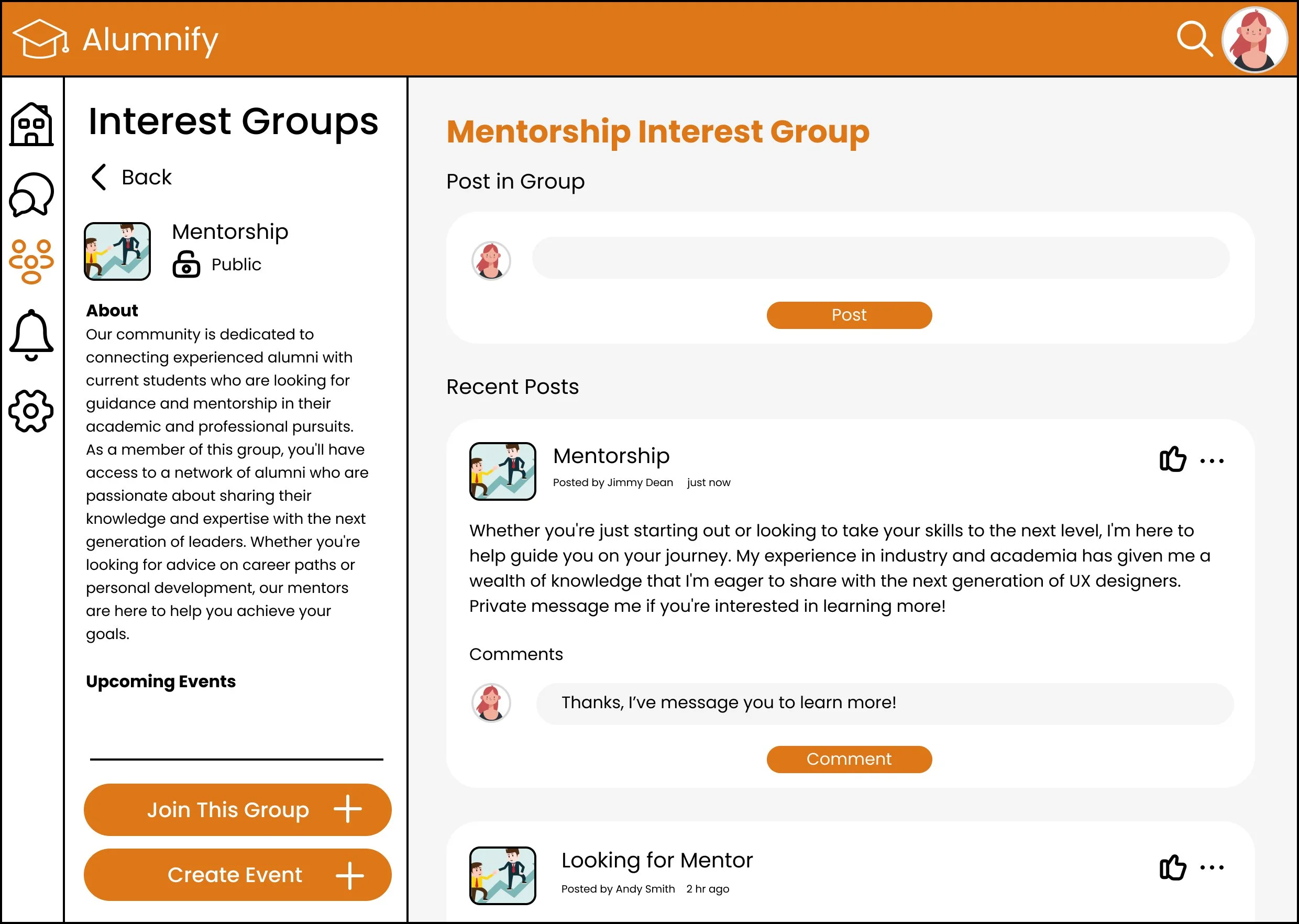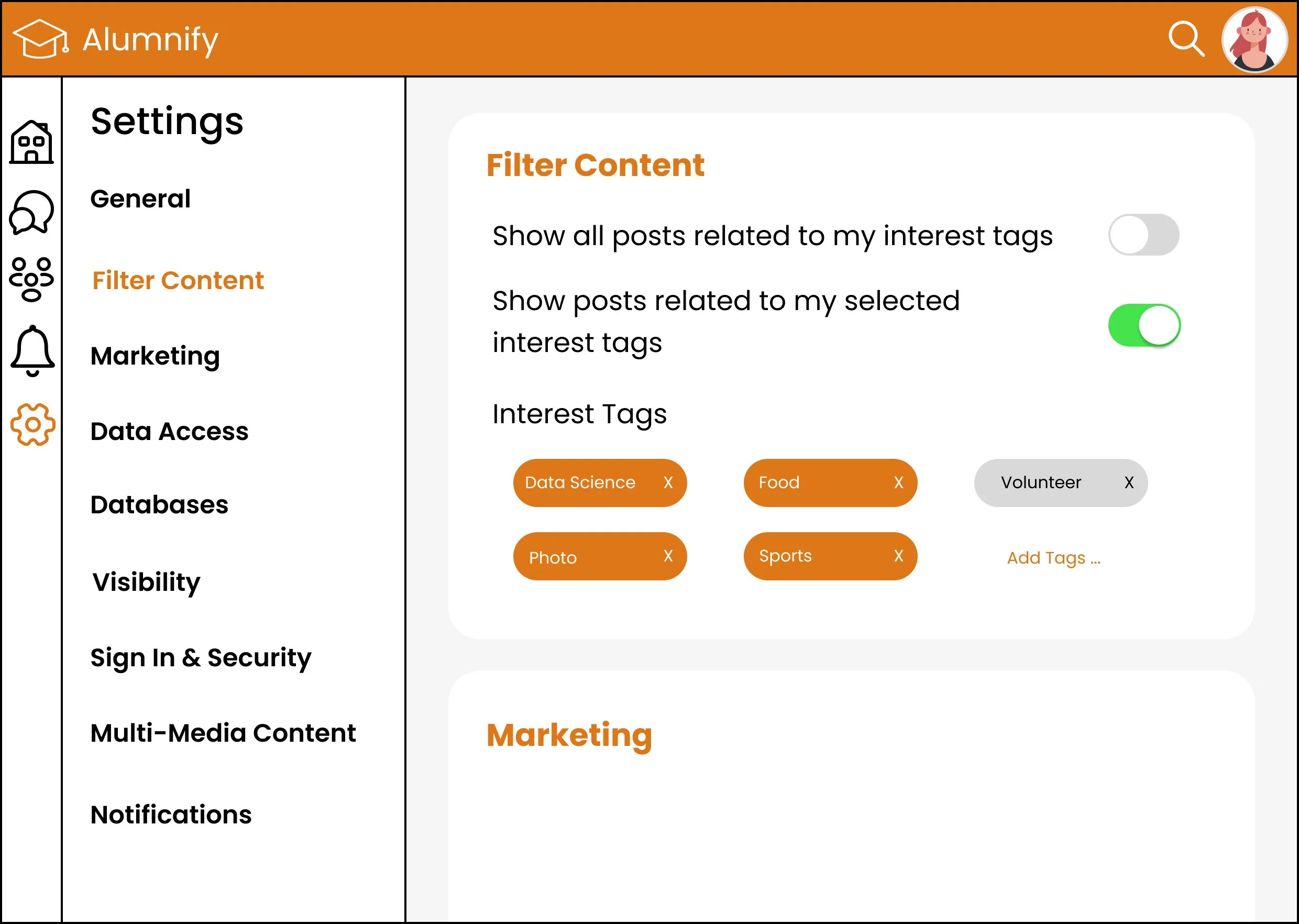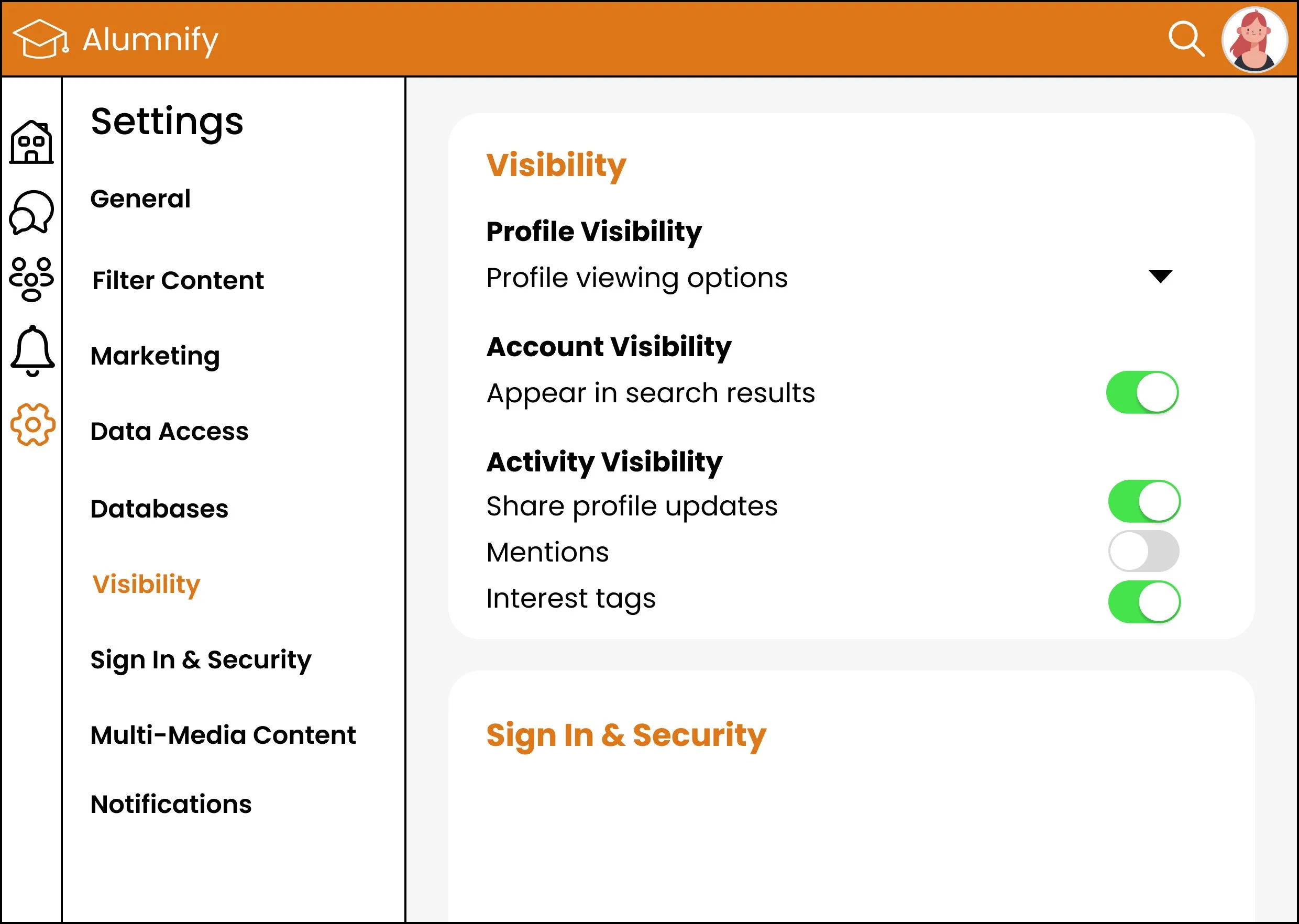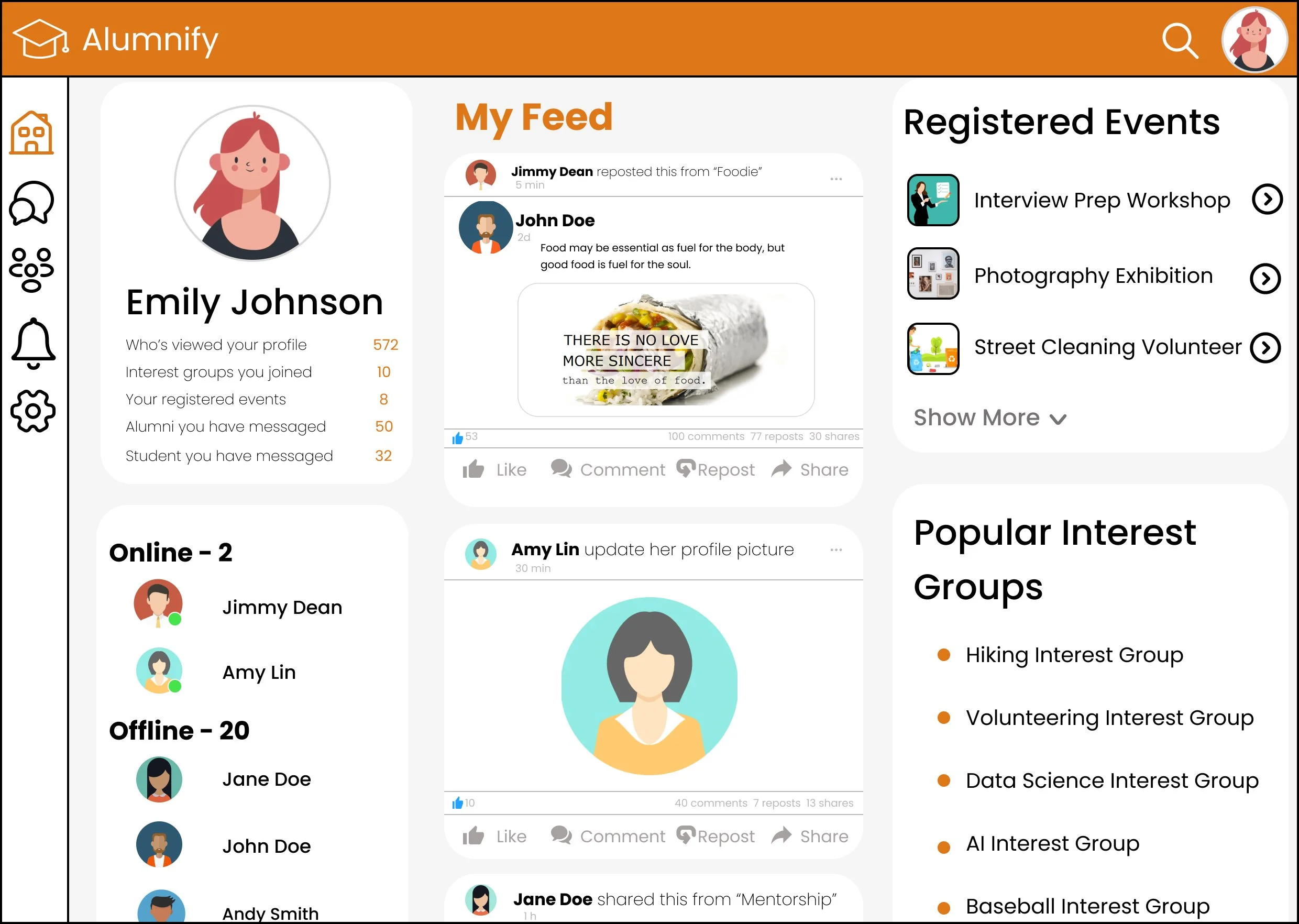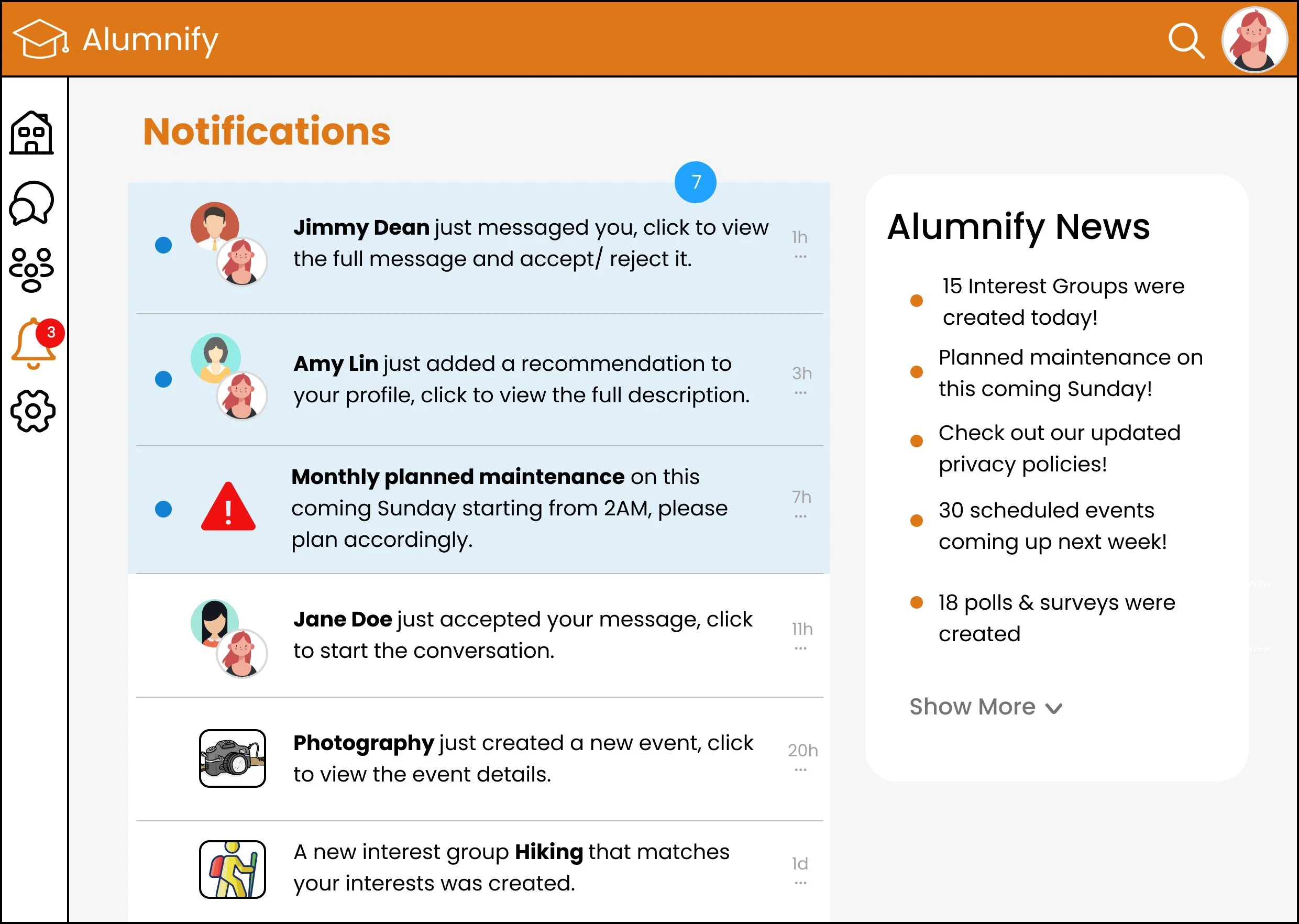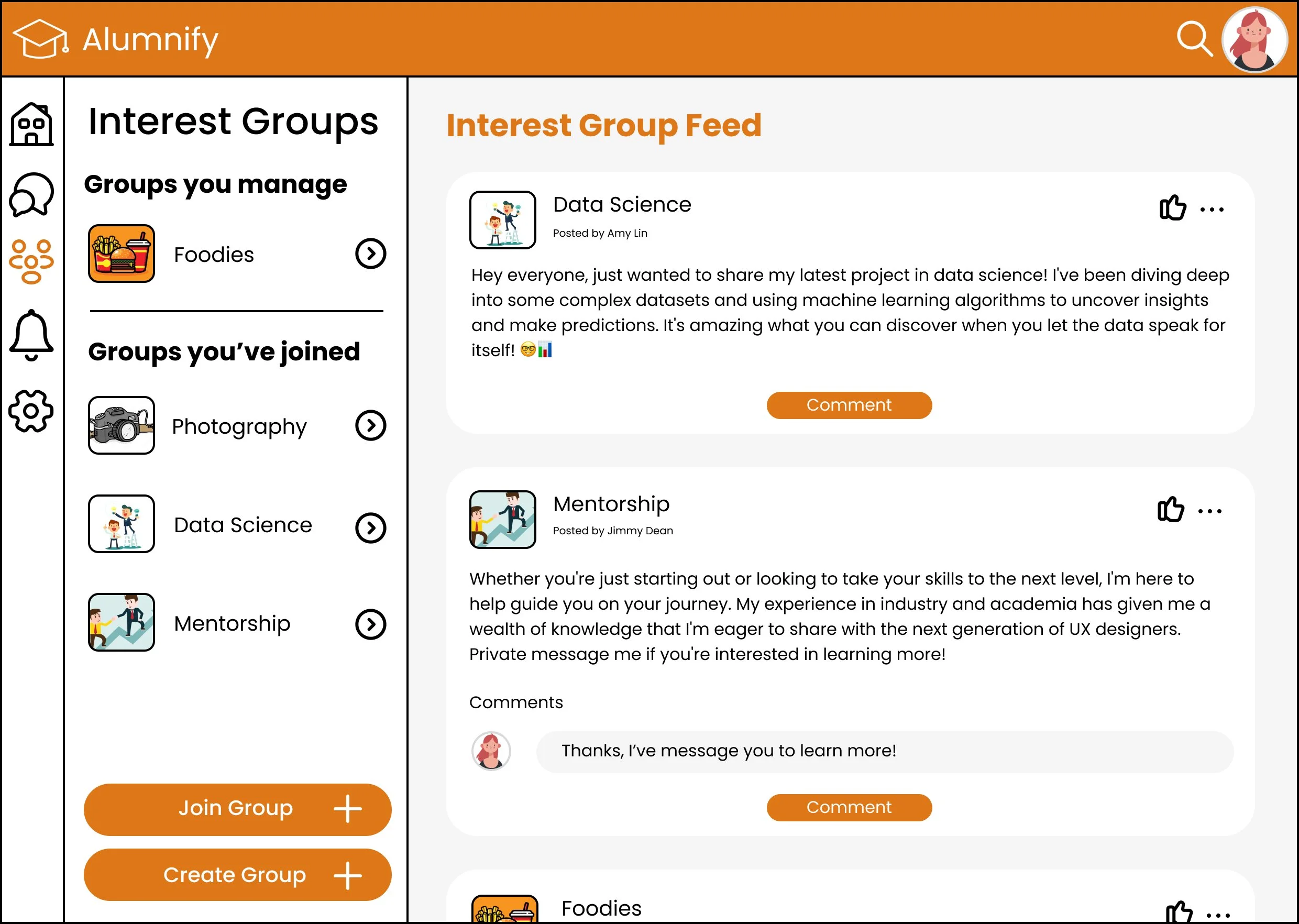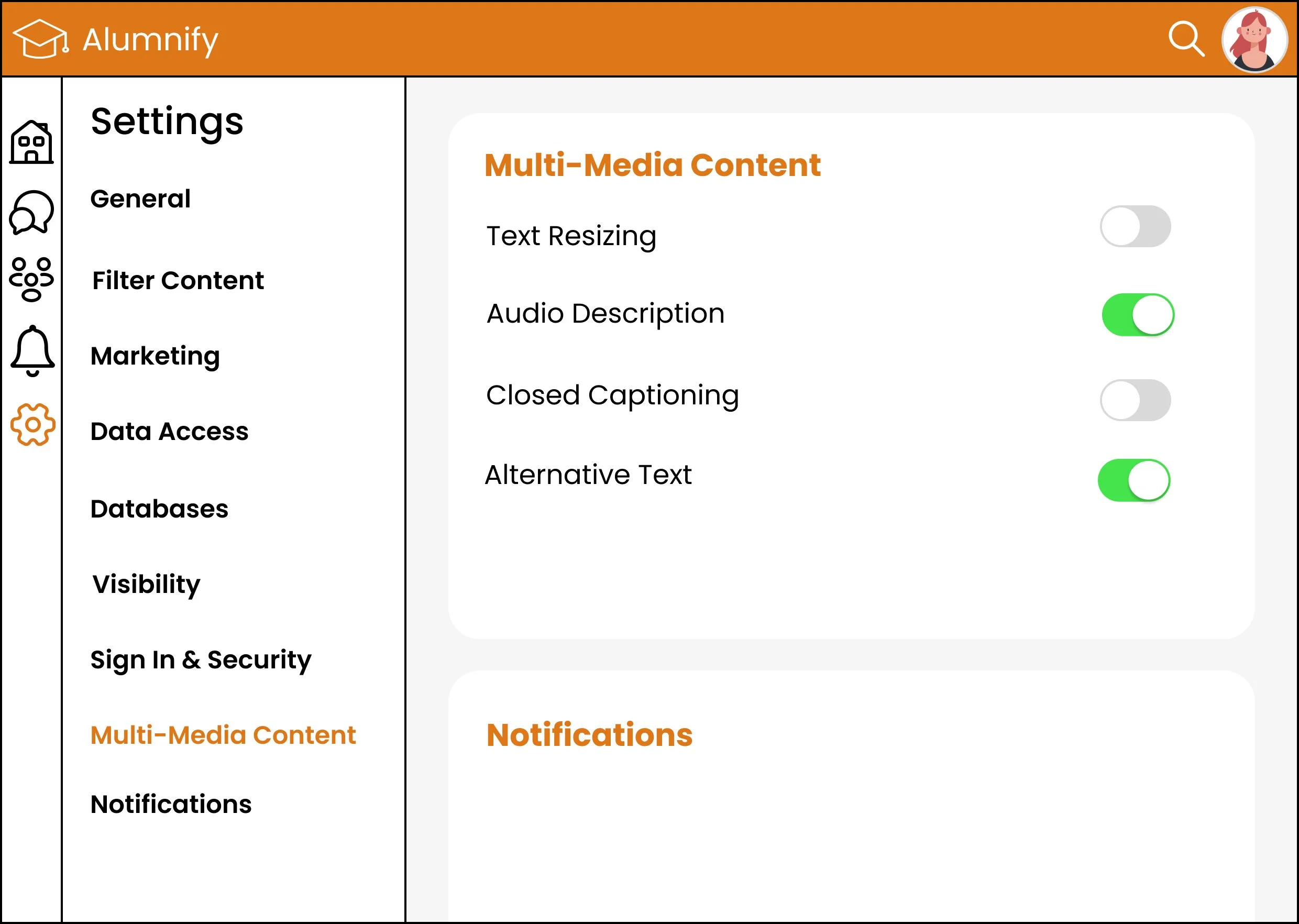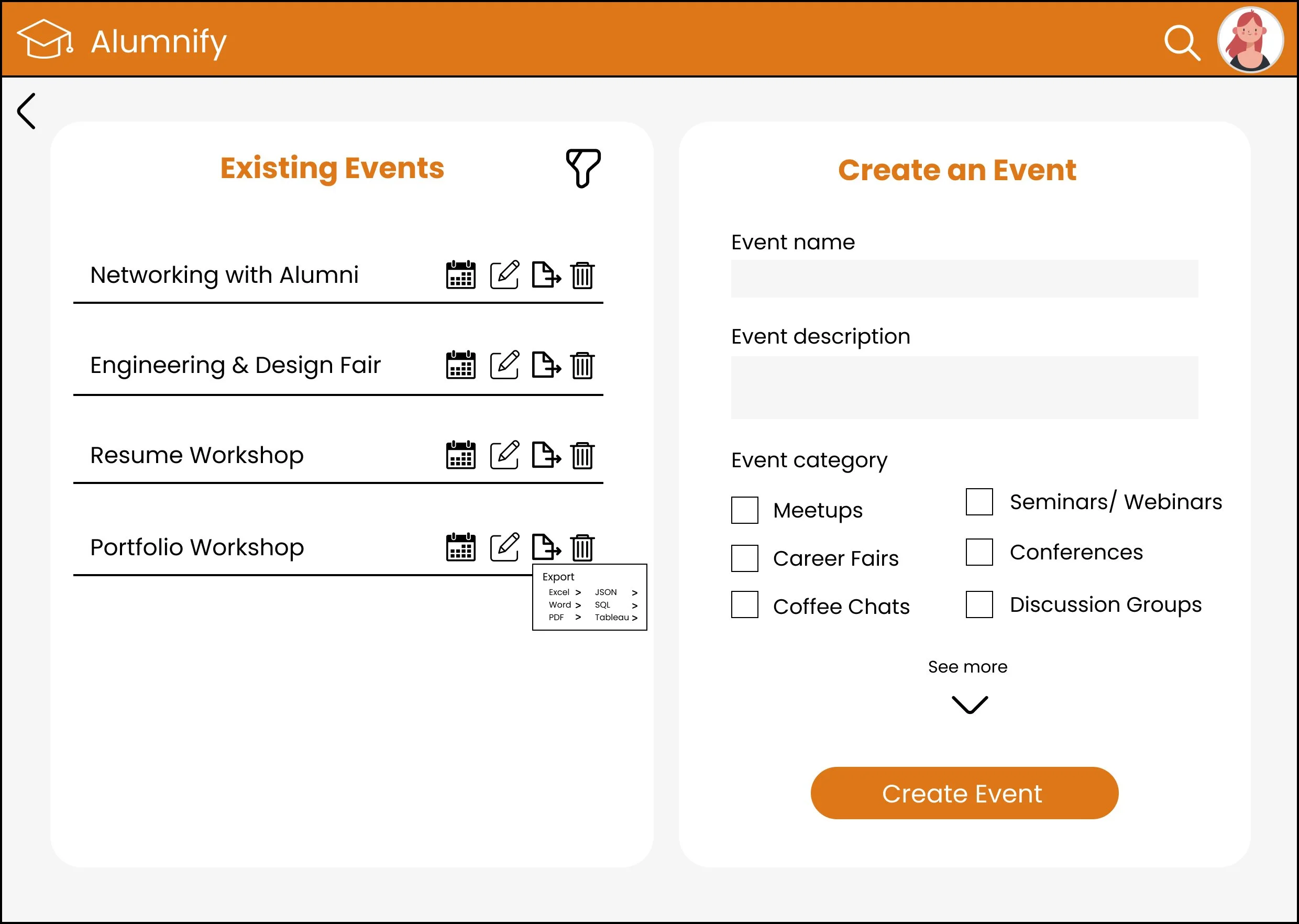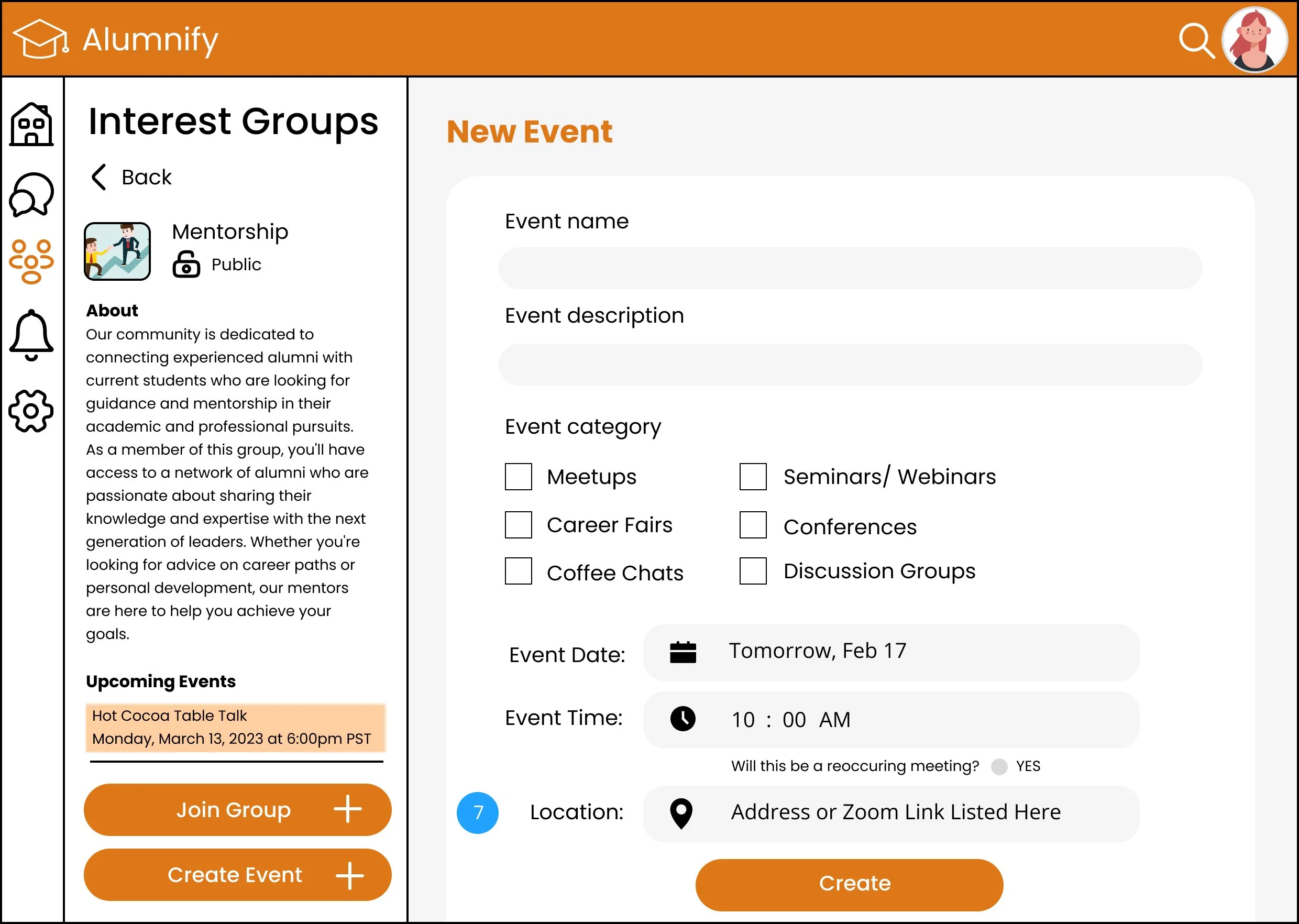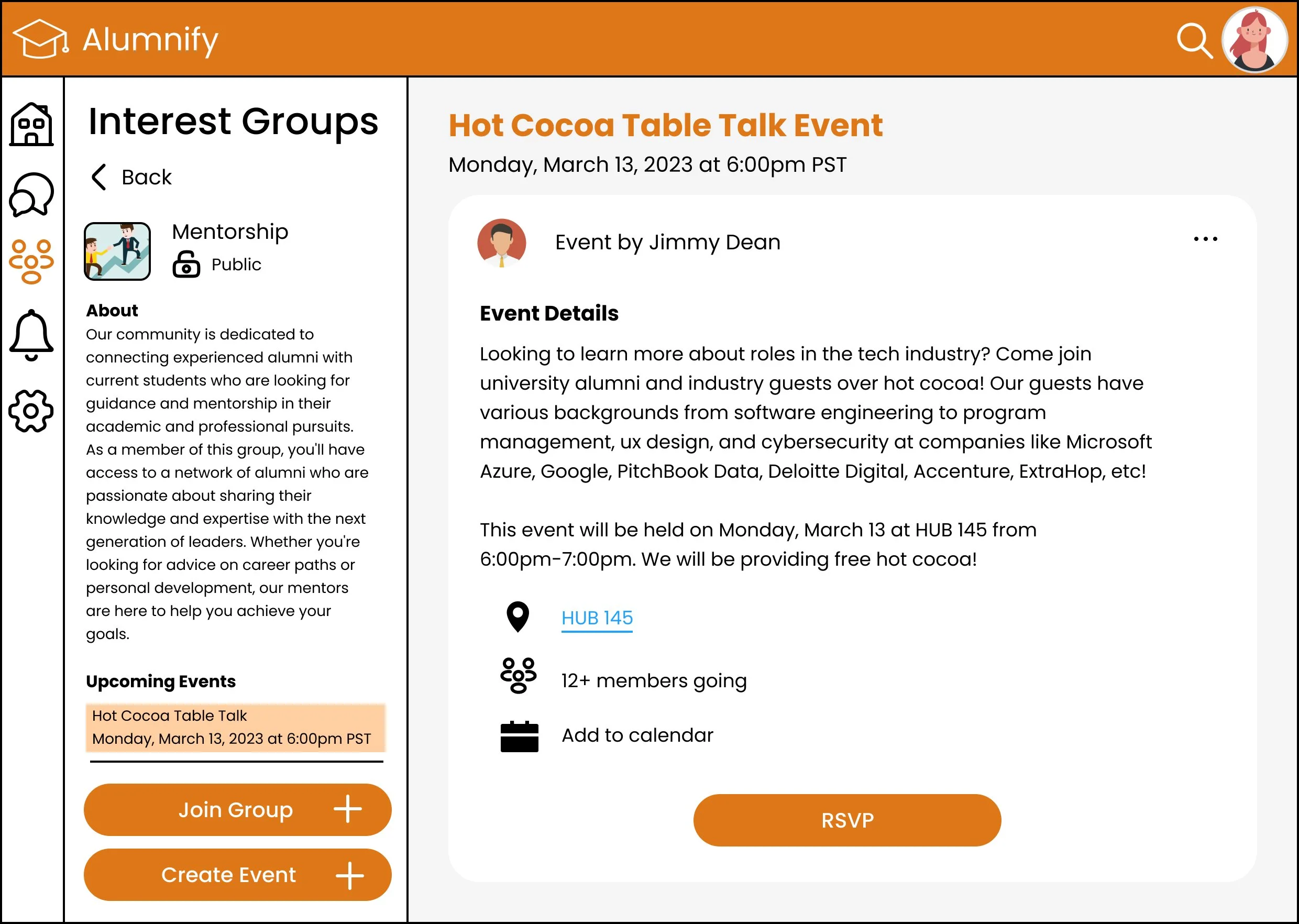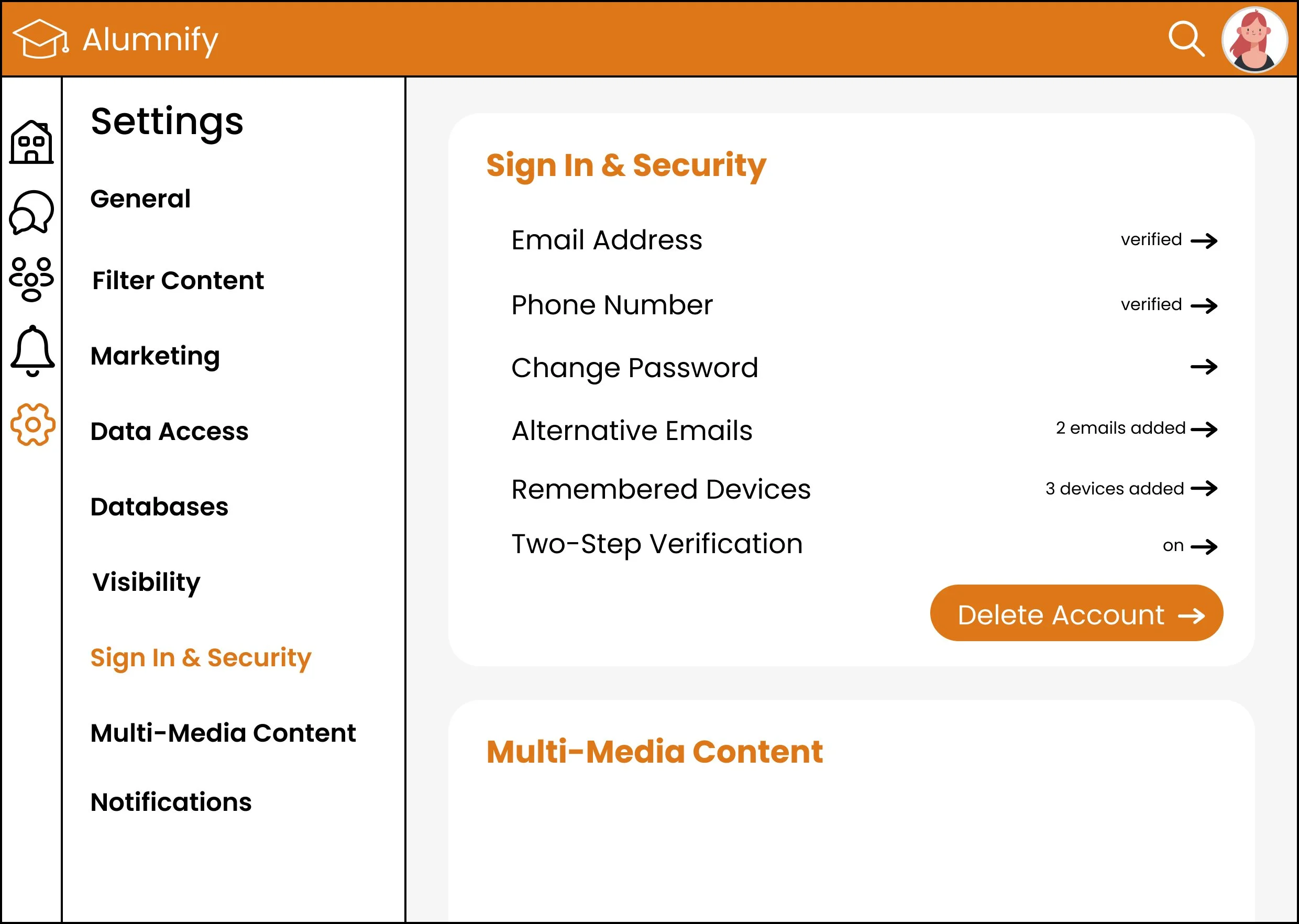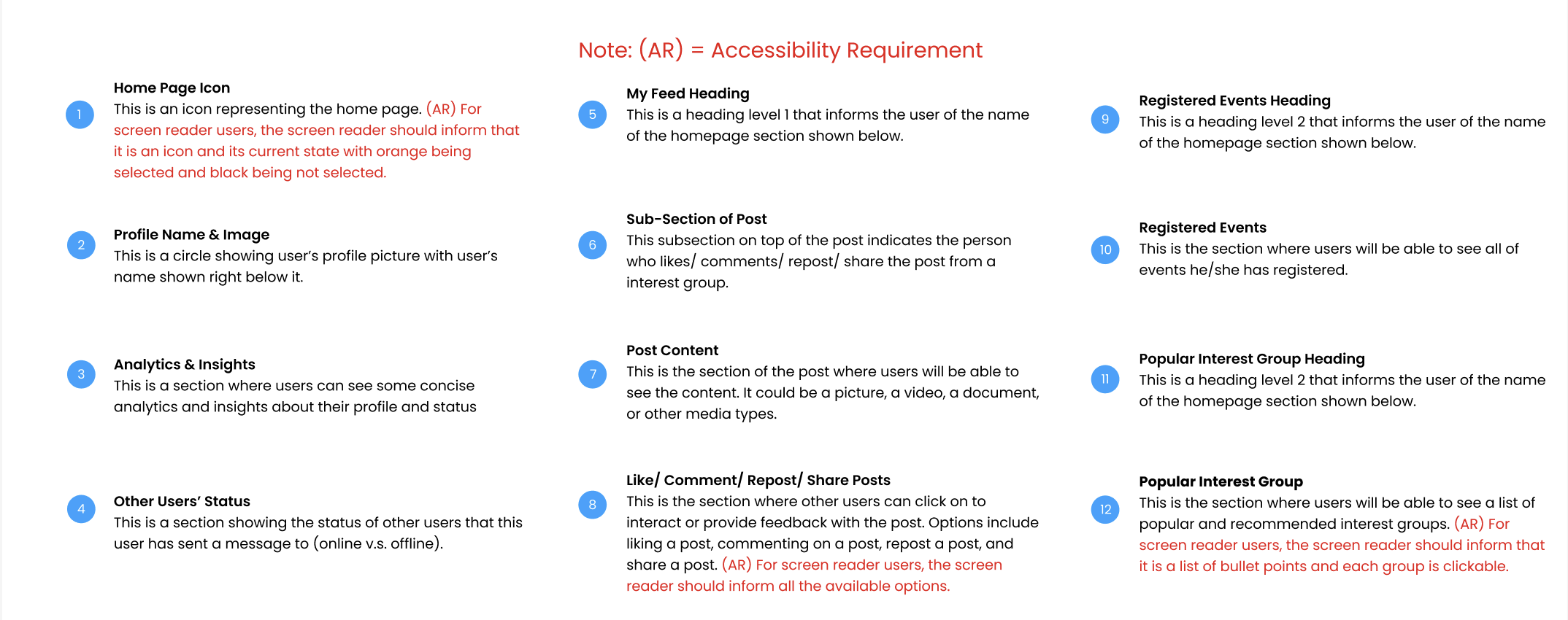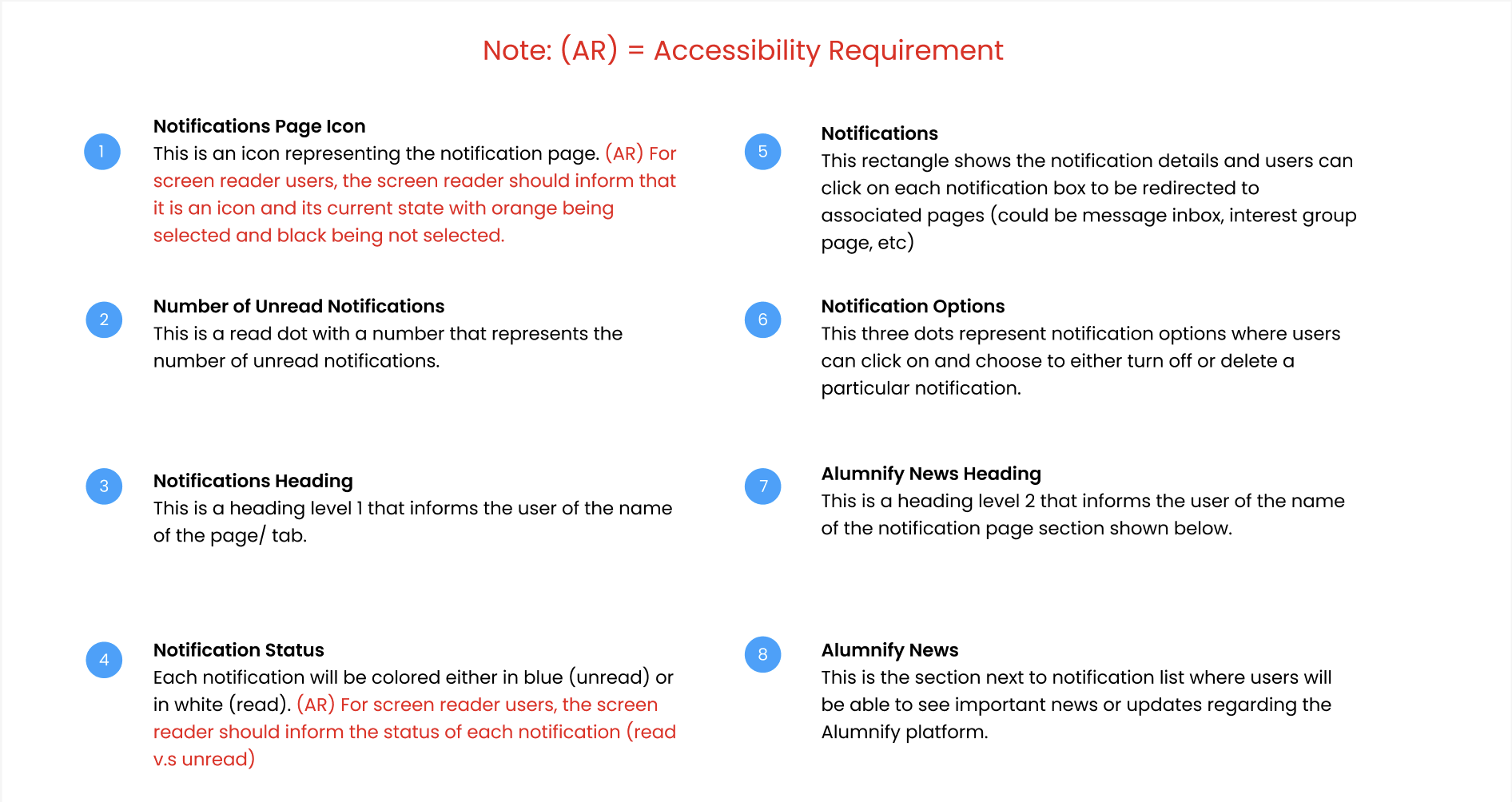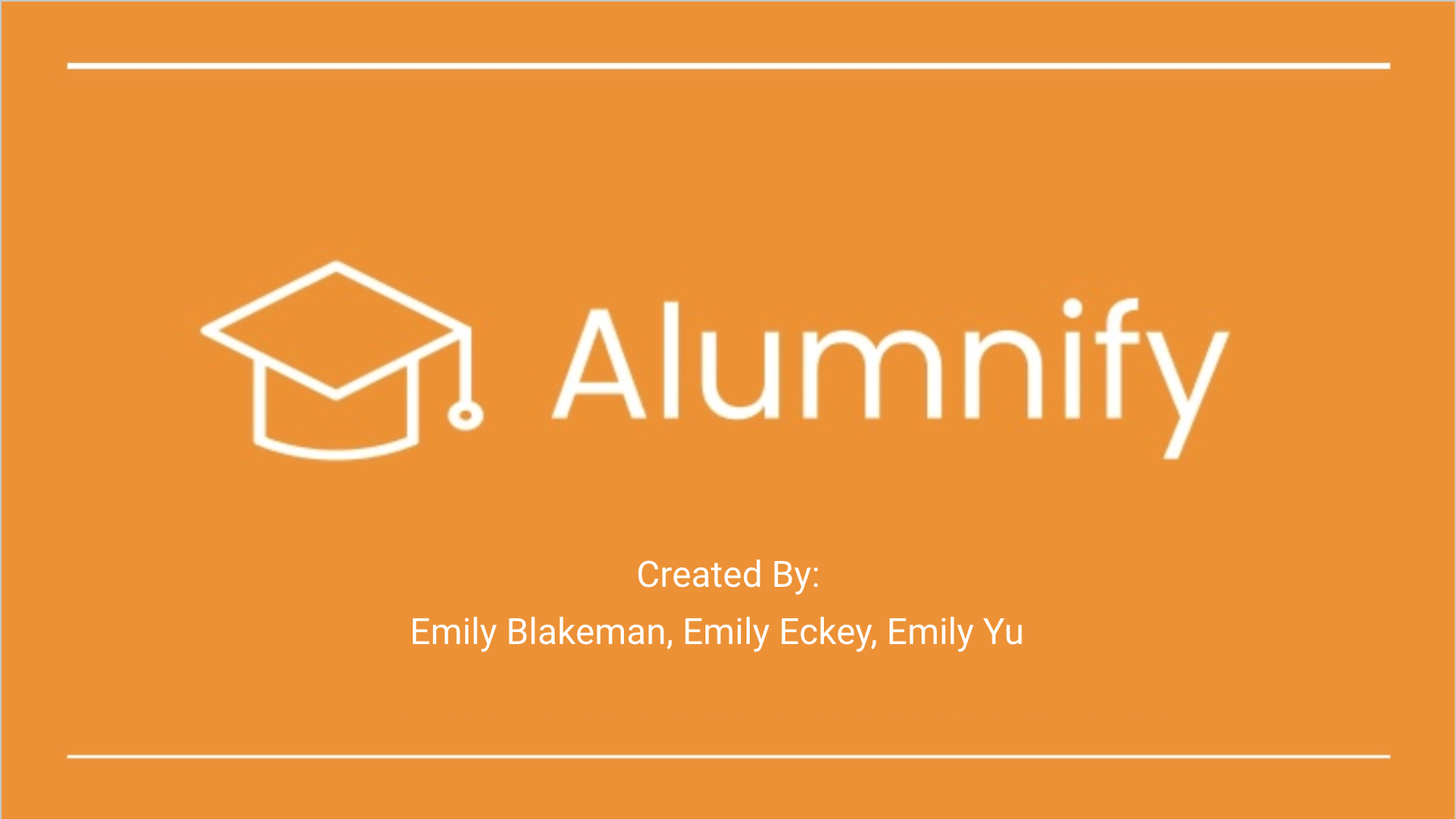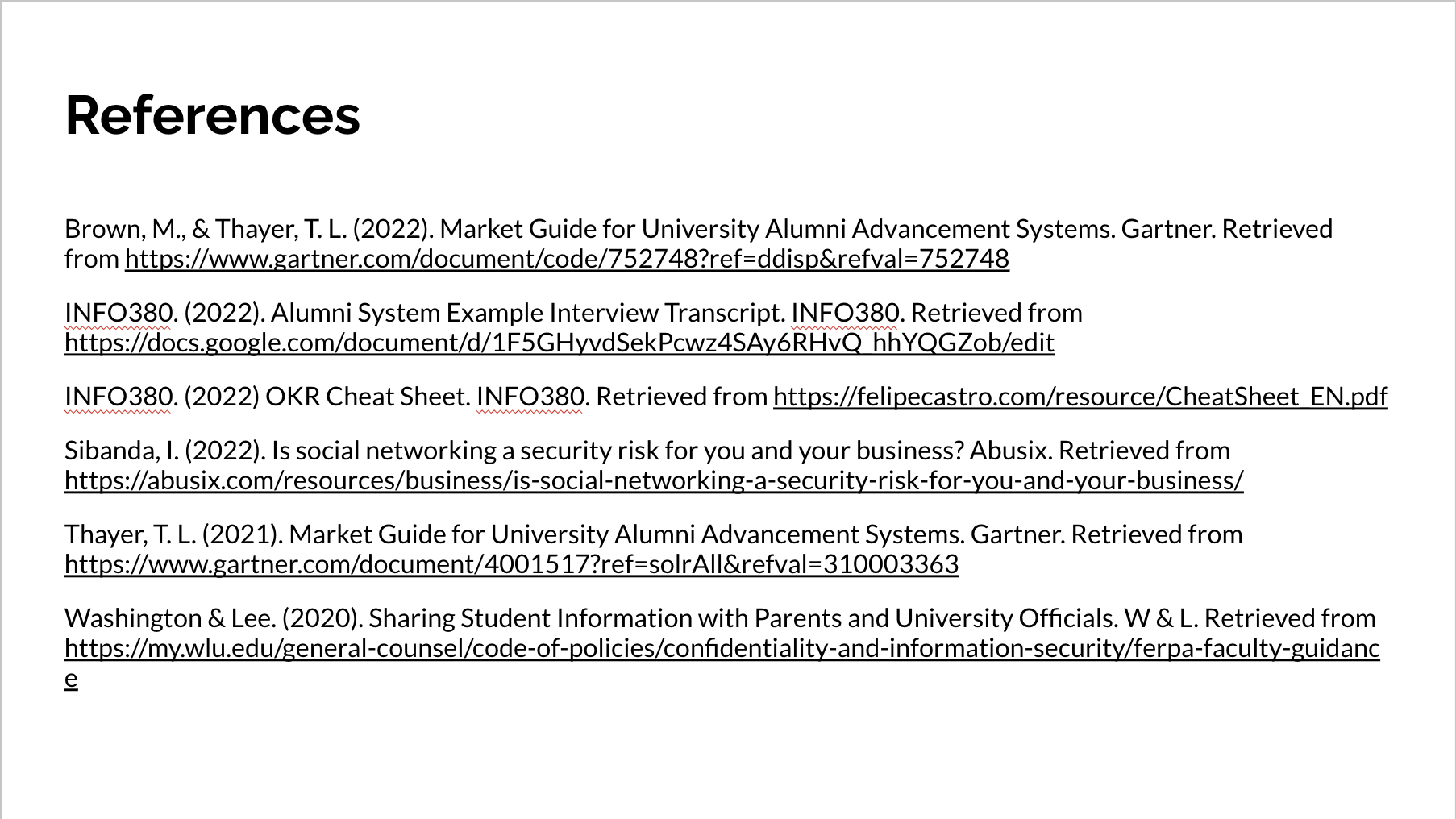Alumnify
A web application geared towards assisting alumni and student career development, mentorship and connection through mutual interests and groups.
Time Frame:
Roles:
Team:
Objective:
Alumnify, aims to serve as a platform that facilitiates networking and engagement between our users through mutual interests and interest groups to allow the ability to gain more connections and networking opporunities.
Jan -- Mar, 2023
Emily Blakeman, Emily Eckey, Emily Yu
Emily Blakeman - UX/ UI Designer Emily Eckey - Researcher Emily Yu - Product Manager
Design Process Highlights
01
Research
02
Synthesis &
03
Design
04
Evaluation
05
Reflection
Ideation
01- Research
Stage 1
Defining the problem
Alumni do not know how to update their information or keep in touch with their organization post graduation. Alumni would also like to connect with other alumni or mentor current students, but do not have a platform to do so.
Stage 2
Identifying key users and stakeholders
Alumni
University Partners and Employers
University Leadership (Deans & Program Chairs)
Student Advisors
Affiliate and Advanced Leadership
Current Students
Stage 3
Identifying the current state: categorizing stakeholders in three groups: alumni, student, and organization leadership
1. For alumni, due to losing connectedness to their organization post graduation. Alumni groups are interested in being more involved within their past university community.
2. For our student stakeholders including prospective students and current students. These student groups are looking for mentorship or employment opportunities as they begin thinking about their life, post university.
3. For university leadership, advisors, partners, employers, and affiliates. These groups deeply care about the success of the organization and need ways to understand students' career paths post-graduation and identify potential partnerships.
02- Synthesis & Ideation
Affinity Clustering and Deriving Insights
Identifying Key Features & Goals
Each of our team members wrote down important terms that related to Alumnify down on sticky notes, for which we then organized into clusters based on categories we would derived from similar stickies.
Each team member then voted on which categories we believed to be the most important factors to consider when beginning the design and development phase to our Alumnify creation.
Creating Use Case Workflow Diagrams
Creating an affinity cluster diagram through organizing sticky notes into key categories, important to fully understanding the multiple phases of development, prosecution and considerations for our platform. This diagram was created to assist our team in further understanding our project goals, outline, design and impact on our future stakeholders
Creating use case diagrams to further understand our intended features, functions, functionalities, and interactions between our different user stakeholder groups.
03 - Design
Designing a web platform
that is user friendly,
simplistic, and informative
Interest Groups
Users have the ability to join a interest group, post to that group’s feed, as well as create and join events within that group.
Settings that allows users to personalize their account and what type of content is being displayed to them!
1
2
3
Key Annotations
04 - Evaluation
05 - Reflection
Key Take Aways:
1) Centering Our Design Around Key User Research is Key
Through researching and understanding our key users needs and goals, our team was able to create a more useful and user friendly web application that best fit our users needs. By understanding our audience we came up with pages and features that were tailored to best fit their desires.
2) Accessibility is Always a Priority
By making our web application more accessible through implementing extra options within settings pages, ways to view our application and ways to alter it, our team is opening our application to be used by a diverse range of abilities, which in turn will enhance the overall experience for our users.
3) Creating a Team Timeline is Tremendously Helpful
When working with a team where everyone had different schedules, we found that creating project due dates for each phase of our project was tremendously helpful and allowed us all to stay on track for reaching our goals. By creating a timeline and holding each other accountable, we had extra time to provide feedback and make any adjustments as needed to our project.
